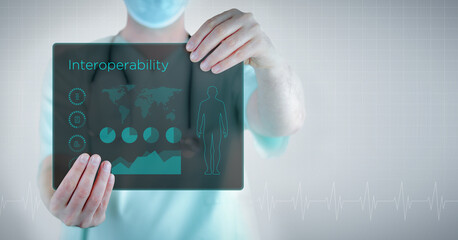Digital and Connected Healthcare
What is interoperability in healthcare?
Read Time 2 mins | Written by: Anuj Kharnal

Interoperability in healthcare refers to the ability of different medical systems, devices, and platforms to communicate and share data and resources seamlessly. This is a crucial aspect of modern healthcare, as it enables healthcare providers to access and use a wide range of information and services, improving the quality and efficiency of patient care.
In the past, interoperability in healthcare was a major challenge, as different medical systems were often built using proprietary technologies and protocols. This made it difficult for them to communicate with each other, leading to a fragmented ecosystem of isolated systems that were unable to share data and resources.
However, the development of open standards and protocols has significantly improved interoperability in healthcare in recent years. These standards provide a common framework that allows different systems to communicate with each other, regardless of their underlying technologies and platforms.
One of the most important open standards for interoperability in healthcare is the Health Level 7 (HL7) standard, which is a widely-used protocol for the exchange of electronic health information. HL7 allows different medical systems to communicate with each other, enabling healthcare providers to access and use a wide range of information and services.
Another important open standard for interoperability in healthcare is the Fast Healthcare Interoperability Resources (FHIR) standard, which is a framework for exchanging electronic health information using web services. FHIR enables different medical systems to communicate with each other using a standardized format, improving the efficiency and accuracy of data exchange.
In addition to open standards, some several technologies and frameworks are designed to improve interoperability in healthcare. For example, the Consolidated Clinical Document Architecture (CCDA) is a standardized format for the exchange of clinical documents, such as patient records and test results. Similarly, the Clinical Document Architecture (CDA) is a framework for the representation of clinical documents in XML.
The benefits of interoperability in healthcare are numerous. By enabling different medical systems to communicate and share data and resources, interoperability helps to improve the quality and efficiency of patient care. For example, it allows healthcare providers to access and use a wide range of information and services, providing them with a more complete picture of a patient's health. This can help to identify potential issues and provide timely treatment, improving patient outcomes.
In addition, interoperability in healthcare also helps to promote innovation and competition. Allowing different medical systems to work together, it enables new and emerging technologies to enter the market more easily, providing healthcare providers with a wider range of choices and options. This can help to drive innovation and competition, leading to better products and services.
Furthermore, interoperability in healthcare also helps to support the growth of the global digital economy. By enabling different medical systems to communicate and share data and resources, it helps to create a more connected and seamless healthcare environment. This can help to facilitate the growth of online health services and markets, providing a boost to the global economy.
Overall, interoperability in healthcare is a critical aspect of modern healthcare, as it enables different medical systems, devices, and platforms to communicate and share data and resources seamlessly. By promoting innovation, competition, and efficiency, interoperability in healthcare helps to improve the quality and efficiency of patient care, supporting the growth of the global digital economy.

